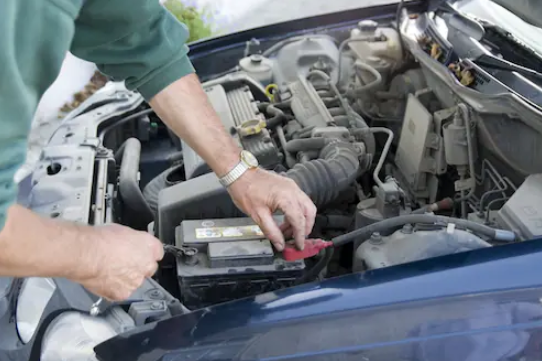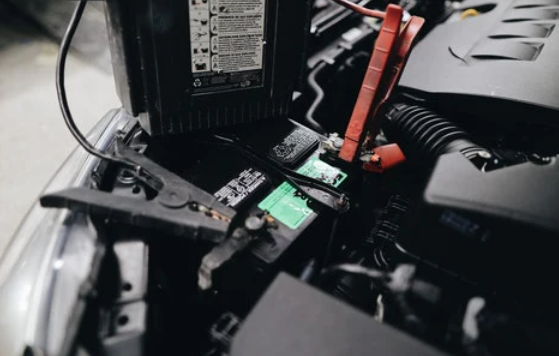Efficient Charging for 48V LiFePO4 Batteries: A Comprehensive Guide to Choosing the Best Charger
As the world moves towards more sustainable energy solutions, lithium iron phosphate (LiFePO4) batteries have emerged as a popular choice for renewable energy storage. These batteries are known for their high energy density, long cycle life, and stable performance. If you own a 48V LiFePO4 battery, it is essential to choose the right charger to maintain its lifespan and performance. In this comprehensive guide, we will discuss everything you need to know about choosing the best charger for your 48V LiFePO4 battery.
Understanding 48V LiFePO4 Batteries
Before we dive into the specifics of choosing a charger, let\’s quickly review the basics of 48V LiFePO4 batteries. These batteries are commonly used in off-grid solar systems, electric vehicles, and backup power systems. They are made up of four 3.2V cells connected in series, which gives a total voltage of 12.8V per cell and 48V for the entire battery. Compared to other lithium-ion batteries, LiFePO4 batteries have a lower energy density but offer higher safety and stability.
Choosing the Right Charger
When it comes to charging your 48V LiFePO4 battery, there are a few key factors to consider. These include the charging voltage, charging current, charging time, and safety features.
Charging Voltage
The charging voltage is the voltage that the charger applies to the battery. It is essential to choose a charger that matches the voltage of your battery. For a 48V LiFePO4 battery, the charging voltage should be around 54.4V. This voltage allows the battery to reach a full charge state without overcharging, which can damage the battery.
Charging Current
The charging current is the rate at which the charger supplies energy to the battery. It is measured in amps (A). The charging current should be chosen based on the battery\’s capacity and the desired charging time. LiFePO4 batteries can handle a higher charging current than other lithium-ion batteries, but it is still important to choose a charger that does not exceed the battery\’s maximum charge rate.
Charging Time
The charging time is how long it takes for the battery to reach a full charge state. A faster charging time is desirable, but it should not come at the expense of the battery\’s lifespan. It is recommended to choose a charger that can fully charge the battery in 4-6 hours. Charging the battery too quickly or too slowly can negatively affect its performance and lifespan.

Safety Features
Safety features are crucial when it comes to choosing a charger. LiFePO4 batteries can be sensitive to overcharging, over-discharging, and overheating. It is essential to choose a charger that includes protection against these potential hazards, such as overcharging protection and temperature monitoring.
Konklusion
In conclusion, choosing the right charger is essential for maintaining the performance and lifespan of your 48V LiFePO4 battery. When selecting a charger, consider the charging voltage, charging current, charging time, and safety features. By following these guidelines, you can ensure that your battery is charged efficiently and safely, allowing you to enjoy the benefits of renewable energy storage for years to come.
-
 Lithium Iron Phosphate (LiFePO4) motorcycle batteries are becoming increasingly popular due to their numerous advantages over traditional lead-acid batteries. LiFePO4 batteries are a type of lithium-ion battery that offer higher energy density, longer cycle life, and improved safety compared to lead-acid batteries. One of the main advantages of LiFePO4 motorcycle batteries is their higher energy density. This means that...Læs mere
Lithium Iron Phosphate (LiFePO4) motorcycle batteries are becoming increasingly popular due to their numerous advantages over traditional lead-acid batteries. LiFePO4 batteries are a type of lithium-ion battery that offer higher energy density, longer cycle life, and improved safety compared to lead-acid batteries. One of the main advantages of LiFePO4 motorcycle batteries is their higher energy density. This means that...Læs mere -
 Introduction The battery industry plays a crucial role in powering the future with advanced energy solutions. As the demand for portable electronic devices, electric vehicles, and renewable energy sources continues to grow, the development of high-performance batteries has become more important than ever. In this article, we will explore the significance of the battery industry and its impact on...Læs mere
Introduction The battery industry plays a crucial role in powering the future with advanced energy solutions. As the demand for portable electronic devices, electric vehicles, and renewable energy sources continues to grow, the development of high-performance batteries has become more important than ever. In this article, we will explore the significance of the battery industry and its impact on...Læs mere -
 Railway engines are the backbone of the transportation industry, and they are powered by locomotive starter batteries. These batteries are designed to provide the necessary energy to start the engine and power its auxiliary systems. Locomotive starter batteries are an essential component of the railway industry, and they have been used for decades to keep the trains running on time....Læs mere
Railway engines are the backbone of the transportation industry, and they are powered by locomotive starter batteries. These batteries are designed to provide the necessary energy to start the engine and power its auxiliary systems. Locomotive starter batteries are an essential component of the railway industry, and they have been used for decades to keep the trains running on time....Læs mere -
 As electric bikes and scooters continue to gain popularity as a convenient and eco-friendly mode of transportation, the efficiency and longevity of their batteries become crucial factors for riders. With advancements in technology, manufacturers are constantly improving the performance of ebike and scooter batteries, making them more efficient and long-lasting. In this article, we will explore the importance of a...Læs mere
As electric bikes and scooters continue to gain popularity as a convenient and eco-friendly mode of transportation, the efficiency and longevity of their batteries become crucial factors for riders. With advancements in technology, manufacturers are constantly improving the performance of ebike and scooter batteries, making them more efficient and long-lasting. In this article, we will explore the importance of a...Læs mere -
 Are you tired of dealing with a dead battery when trying to start your vehicle? A lithium starter battery may be the solution you been looking for! Here why: First of all, lithium starter batteries are much lighter than traditional lead-acid batteries. This means you can reduce the overall weight of your vehicle without sacrificing power. Plus, the compact...Læs mere
Are you tired of dealing with a dead battery when trying to start your vehicle? A lithium starter battery may be the solution you been looking for! Here why: First of all, lithium starter batteries are much lighter than traditional lead-acid batteries. This means you can reduce the overall weight of your vehicle without sacrificing power. Plus, the compact...Læs mere -
 The 12V 100Ah LiFePO4 Lithium Battery is a cutting-edge power source that offers superior efficiency and reliability for a variety of applications. This type of battery is becoming increasingly popular in the market due to its numerous benefits over traditional lead-acid batteries. In this article, we will explore the features and advantages of the 12V 100Ah LiFePO4 Lithium Battery. ...Læs mere
The 12V 100Ah LiFePO4 Lithium Battery is a cutting-edge power source that offers superior efficiency and reliability for a variety of applications. This type of battery is becoming increasingly popular in the market due to its numerous benefits over traditional lead-acid batteries. In this article, we will explore the features and advantages of the 12V 100Ah LiFePO4 Lithium Battery. ...Læs mere -
 Wholesale Lifepo4 batteries are widely used in various applications due to their high energy density, long cycle life, and excellent performance in extreme temperatures. With the increasing demand for these batteries, many suppliers have started selling them online. While online purchasing of wholesale Lifepo4 batteries is convenient and time-saving, it is crucial to consider certain factors before making a purchase....Læs mere
Wholesale Lifepo4 batteries are widely used in various applications due to their high energy density, long cycle life, and excellent performance in extreme temperatures. With the increasing demand for these batteries, many suppliers have started selling them online. While online purchasing of wholesale Lifepo4 batteries is convenient and time-saving, it is crucial to consider certain factors before making a purchase....Læs mere

